Post Player Drills and Skills
“Post Players” can be called Forwards, Centers, Post Players, Bigs, or Big Men. This player is responsible for the low / high post areas. In youth basketball the taller players usually end up playing in the “Post” (the traditional spot for big players). Having post players work on ball handling and outside shooting is very beneficial to their total development.
The very least that Post Players should do in the game is box out and get rebounds. Boxing out is easy to teach, but sometimes very hard for players to remember to do in games.
Check out our New Download Now!
Check out the Post Move Video Clips below…
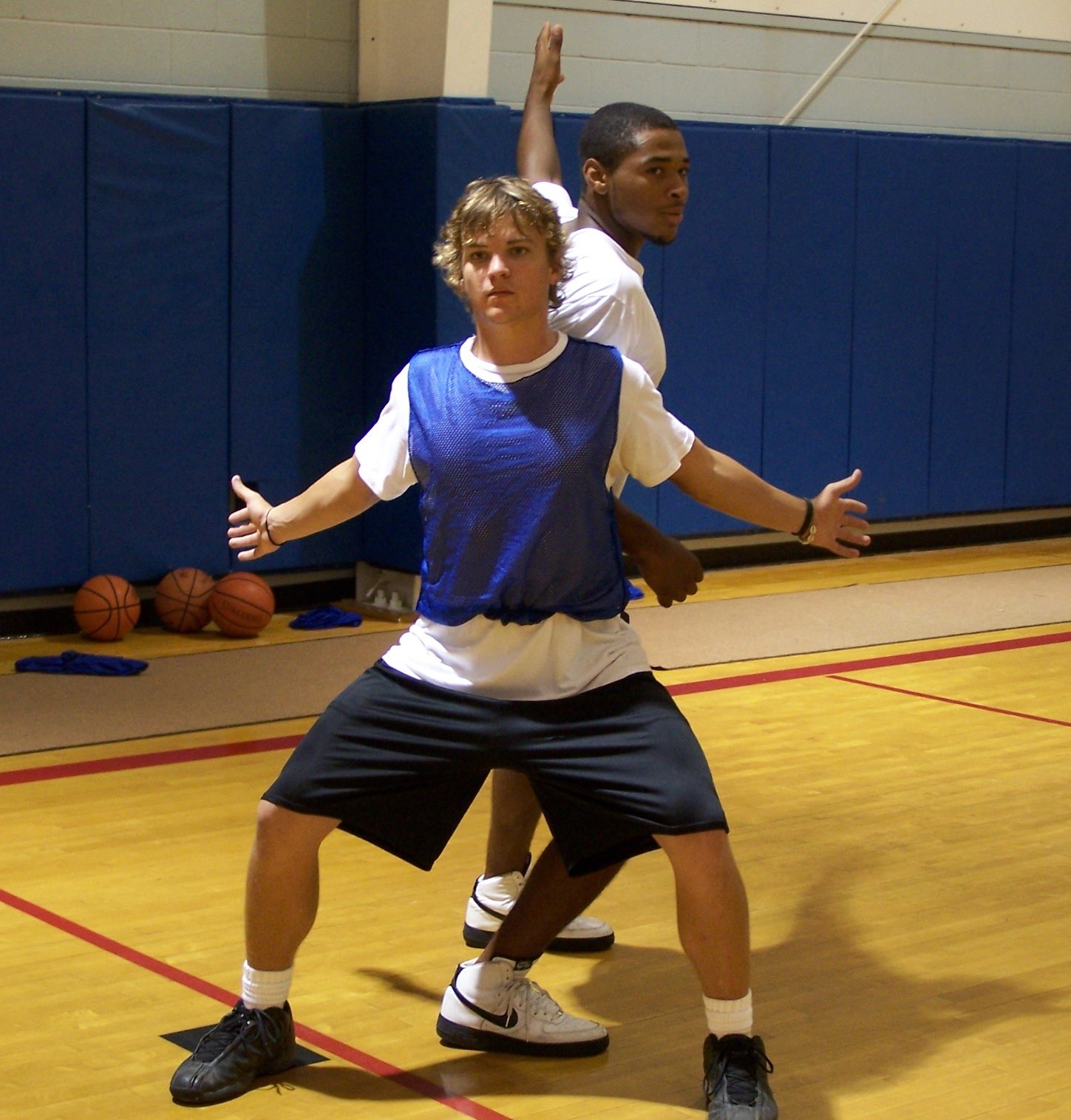 |
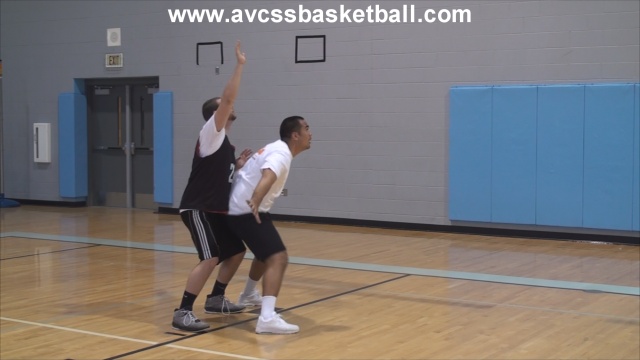 |
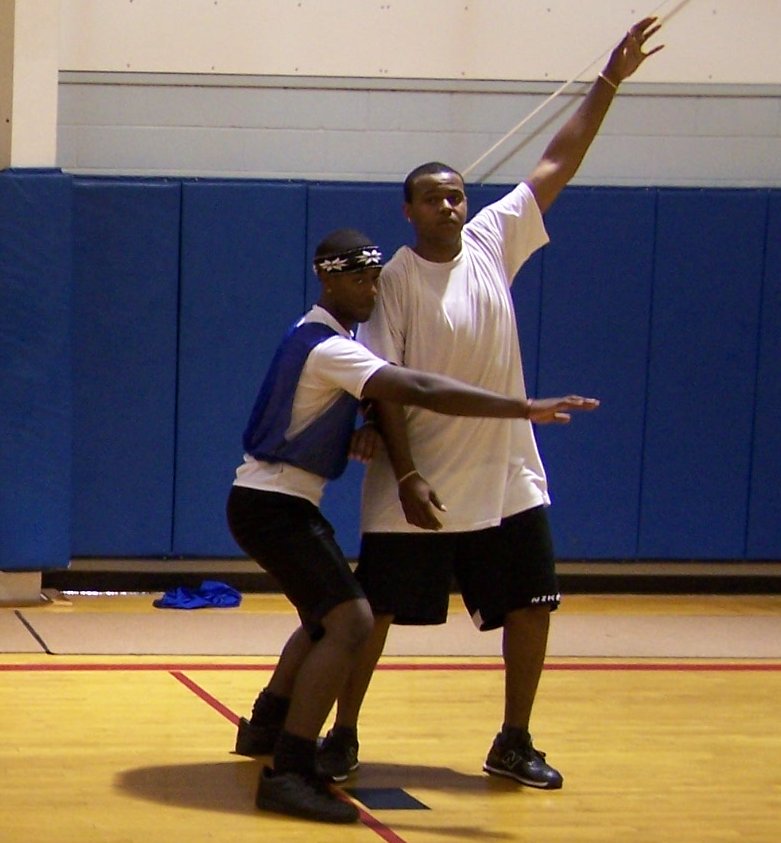 |
Basic Skills to work on for beginning Post Players: Jumping, Catching, Passing, Footwork, Ball Handling (basic), Free Throws, Lay Ups, Bank Shots, Basic defense (moving side to side, keeping their hands up)
Advanced Skills for Post Players: Rebounding, Offensive Put-Backs, Outlet Pass / Pivoting, Screening / Flashing to the Ball, Ball Handling – More Advanced, Lay-Ups (game like drills), Calling for the Ball, Post Moves – Basic Drop Step / Dribble and Hop Move, Positioning / How to Seal a Defender, Defense, Blocking Shots
Remember – coaches must first get their post players to execute the basic fundamentals before moving on to more advanced skill work.
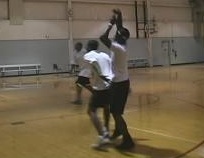
Post Player Offensive Skills – Coaching Tips / Notes
1. Posting Up – Post Players should never post up a “spot” on the floor – they should always post up on a defender. Which means, don’t just run to the block and stand there, find a defender and post them up.
2. Post Moves – Post Players will need to learn as many “Post Moves” as they can. Not only learn them, but to practice them so many times that they become second nature in a game. Here are some of the post moves that all post players should learn:
Right Side / Drop Step Post Move
(High Right) / Up and Under Move
Dribble and Hop Post Move (Right)
(Left with Defense) / Dribble and Hop Post Move
Don’t make it easy for the Defense
3. Make the Defense work – When posting up a defender, the post player should always make the defender work hard to defend them (never make it easy for a defender in the post).
4. Calling for the Ball – Post players should call for the ball, and have a hand up to “direct” where they want the pass to go.
5. Passing Options – When receiving the pass in the post – be aware that you have the option to pass the ball back out to the wing area (this can open up the perimeter for an outside shot, and also allow the post player to re-establish position in the post.
Pass to the Post and Slide Down Example
6. Sealing the defender is critical to establishing post position. A post player should “seal” the defender away from the side of the pass (post up in a position where they are best able to receive a pass from a teammate). A good post player learns to “fight” for position in the post. On offense a player has every right to the spot on the floor as the defense does. Work hard, be aggressive and fight for this spot.
7. Offensive Rebounds – Any offensive rebounds should be put right back up (jump up, catch the ball, land, and pop right back up with no hesitation).
Check out these Post Player Videos for more help!
Get in a position to Score!
Have you ever seen a post player standing on the block, then a guard drives baseline, the post player should move but doesn’t? This causes congestion – A good post player can see what’s happening on the court and adjusts quickly. Here are a couple of very good suggestions to help post players know where to go when a guard is driving to the basket – watch the video clips and learn how to get in a position to score…
Post Players / Offense, Slide High
Offense, Slide Low / Post Players
Defensive Stances – Post Players
Post Players should understand and use the following defensive stances. This information will help a post player understand how to play to their opponents strengths and weaknesses:
Quarter-Turn Stance – When related to post player defense the quarter turn stance should only be used to set up the Fronting or Behind stances (use just before you are ready to front or get behind the post player). This video clip will demonstrate a player going from a quarter turn to a fronting stance (make sure you look at the foot work involved).
Quarter Turn to Fronting Stance
Fronting Stance – This stance is best used on an offensive post player that has good post moves and dribbling skills – use on a post player with good shooting skills (fronting will keep the ball out of their hands).
Behind Stance – This stance is best used on an offensive post player that is a good rebounder, but a poor shooter – use on a post player with poor post moves, poor dribbling skills.
Defensive Stances for Youth Basketball – Handout
Defensive Rule for Post Players – Never stand to the “Side” of a post player on offense (especially if they are a good post player). This will make it easy for them to seal the defender off and get in a better position to score.
* Either use the Fronting stance or the Behind stance!
Post Player Defensive Skills
Coaching Tips / Notes
1. Posting Up – When defending in the Post area – since the Post Player on offense is always trying to post up the defender to gain position – it’s the defenders job to not allow the Post Player on offense to get into a position to receive an easy pass.
2. Boxing Out – Is a must for post players. Boxing out is most likely the easiest basketball skill to learn. But actually the hardest basketball skill to remember to do in the game. This skill is more of a mental skill, and is the most important of all the post player drills.
Boxing Out Basics (Right Side)
3. Rebounding – Is a very important skill for all post players to possess – go up small, come down big, chin the ball, and quickly outlet the ball to a guard.
Rebounding Basics (Right Side)
More Rebounding and Boxing Out Video Clips – Click Here!
4. Defensive Stance – Never stand next to an offensive player in the post, either front or get behind.
Post Player Drills
1. The Superman Drill – One of the best post player drills for post players (possibly even the best).
2. Mikan Drill – A classic post player drill that is proven to be one of the best.
3. Offensive Put Back Drill – One of the very important post player drills for all post players to master.
4. Run to Wall Taps Team Drill – Good post player drills help players to learn how to stop fouling on defense (and a good jumping / conditioning drill). Stand about 6 feet away from a wall, run as close to the wall as you can. Then jump stop, keep jumping straight up (both hands straight up). Try not to hit the wall with any part of your body (or you just fouled someone).
5. Power Slam / Drill for Soft Hands – A simple, but very effective ball handling drill for “soft hands” (players that are having trouble catching the ball).
6. Shooting Drill / Block to Block – Post player drills need to include shooting – Post players will be shooting from the block a good percentage of the time, so why not practice shooting at these spots.
7. Shooting Drill / Elbow to Elbow – Another area where the post player will shoot from often – an easy shot to develop since it’s just about the same distance as a free throw.
8. Wall Taps Jumping Drill – One of the best post player drills that will help with a players jumping ability is Wall Taps. A simple but very effective post player drill used.
Conclusion
Post players will need to work on their post player skills just as much as guards do. Just because a player is really tall doesn’t make them a good basketball player. The art of playing in the post is very hard to master. It takes a lot of hard work, dedication, and post player drills. Post players must be able to jump high, rebound, box out, catch the ball, pass the ball, pivot, be aggressive, shoot the ball, and also be good ball handlers. Work hard to be the best you can be!
Post Player Drills
Check out our New Download Now!
Blocking Pads – A great tool for developing Post Players

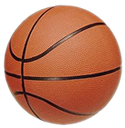

This is exatcly what I was looking for to help me teach my son the basics of posting up. Thanks!